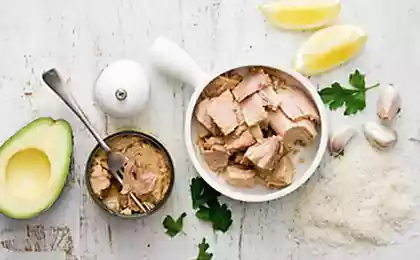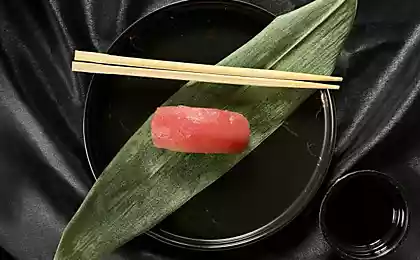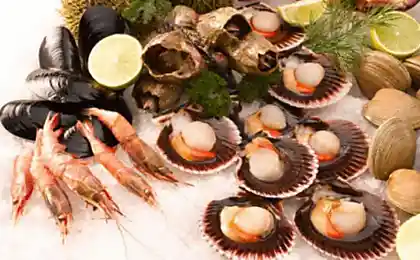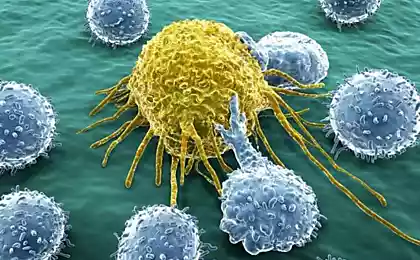550
7 shocking facts about seafood
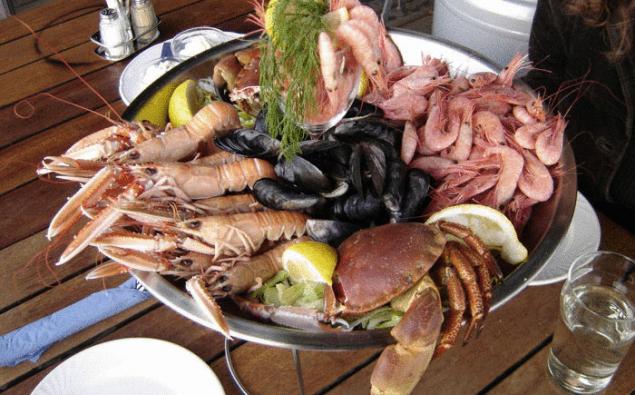
7 shocking facts about seafood
Whether it's a delicious plate of pasta with prawns, huge lobsters or salmon — the seafood is incredibly popular around the world. In some countries it is not only the main source of protein available to most people, but one of the main foods in General. But, despite its popularity, there are still many myths associated with seafood and their use.
7. Do you feel pain lobsters and crabs

Swimming in a boiling cauldron
Long time activists fighting for animal rights condemn this barbaric method of cooking lobsters and crabs, as lowering them alive into boiling water. They call to stop the torture. But foodies explain this method of cooking is the need of culinary technology and the fact that these marine animals do not feel pain. The results of recent research prove that the activists are right – crustaceans can actually feel pain. Robert Elwood and a group of researchers from Queen's University Belfast have conducted a lot of tests to confirm or refute this theory. They have worked with acetic acid to the shrimp and crabs were subjected to electric shock. Every time they watched how the animal reacts to this impact and how stops responding when the application of anesthetics. All experiments suggests that crustaceans experience pain, and perhaps one who wants to lower them in the boiling water, think about it.
6. Parasitic nematodes

Parasitic nematodes
Buying fish fillets at the store, no one is immune from unpleasant surprises. The most popular fish – salmon and trout are also susceptible to parasites, round worms by anisakidae. They curl up into a ball, live and feed on the flesh. Most of the fish on the planet is infested, so when buying you should carefully check the fish for their presence. If you thoroughly cook the fish, that during heat treatment the parasites are killed, but if you eat raw or underdone, undercooked, they from the body of the fish may simply migrate to humans and cause disease.
5. Remove large veins from shrimp

To remove or not to remove — that is the question
Shrimp are the most common and popular seafood in the world. But the question arises, to remove or not the vein that is in her abdomen. She plays the role of the intestine, and if not to delete it, you can eat the shrimp did not have time to withdraw from your body. And eat shrimp at the bottom of ponds the remains of other marine animals, and it is not advisable to eat the same thing together with her. But there are fans of raw shrimp, freshly caught. Some experts say that if you leave even a small vein from the shrimp, the taste is not the same. Although no one does serious not at risk. It is a matter of personal preference!
4. Shark fins

Shark fin soup
The shark can hardly be called the favorite of the marine animals, but its fins are used for cooking delicious soup. To get them, people catch sharks, cut the fins and throw the wounded animal in the ocean to die. Recently, the authorities of the United Arab Emirates and other countries have banned the shark fin fishery. By law, if someone caught a shark, you must bring its carcass to the port. Not only that, the fish is experiencing terrible pain, the barbaric fishing dirty water. In China shark fin soup is very expensive, costs more than $ 100 per serving. Once it was served to the table with the royals. Today, it has more ritual significance for celebrating special occasions and business meetings. The purpose of adding fins to the soup is not the taste, just thickens the soup.
3. Frozen fish

Everyone who eats sushi or sashimi, you should know that, most likely, before you get on the table, fish spent a long time frozen, despite the fact that there it must be raw, without any special freezing. Although, for example, in the United States by law, any fish before sale to the consumer should be permanently frozen to kill certain parasites and bacteria. Note that many fish are seasonal, and to keep, it will freeze. For example, the tuna decided to send in a freezer for two years. Many restaurateurs besides, I expect that ordinary consumers can not distinguish whether the frozen fish before cooking and how or not.
2. Eat oysters in months whose name ends in "-Pb"

Oysters can be eaten all year round Probably all heard the advice that eating oysters and other shellfish need in the months whose name ends in "-Pb". But many do not adhere to this rule and eat shellfish on request all year round. They believe that it is the rule "-Pb" was invented by North American Indians for pilgrims and settlers from Europe, as in other months of the year shellfish absorb contaminants from the algae blooms. Besides, usually summer is the period of active reproduction, and many feel that the taste is not the same. Today no such problems. Clams that are purchased at the store are grown on special farms and imported from countries where algae are not blooming.
1. Acne and the discovery of anaphylaxis

Fish can be frozen in reserve, to cook at once, and even eaten raw. But there is a delicious acne, which before use is required to cook. Even a small piece of raw eel can kill, because the blood is very toxic. Freezing does not solve the problem. The only way to get rid of toxins in the blood of acne is to prepare it. But his blood is a valuable product for medicine. In 1900-ies Dr. Charles Richet interested in the experiment of Louis Pasteur who cure some disease, infecting the body is weakened strains of the same disease. The body included protective reserves, develop antibodies, and myself healed. Richet decided that so it will be with the blood of the eel. To test his theory he injected the blood in small portions to the dogs which manifested anaphylactic shock – a severe Allergy or even death. It opened anaphylaxis, for which Rice will receive the Nobel prize in medicine.
Source: www.novate.ru
How a foot massage to relieve tension in the back
A lover of sashimi nearly died from infection by tapeworm video






